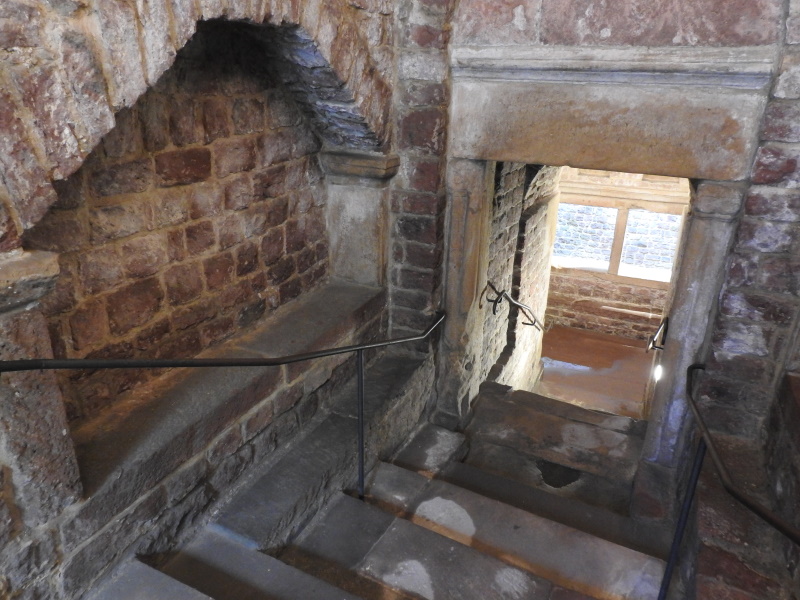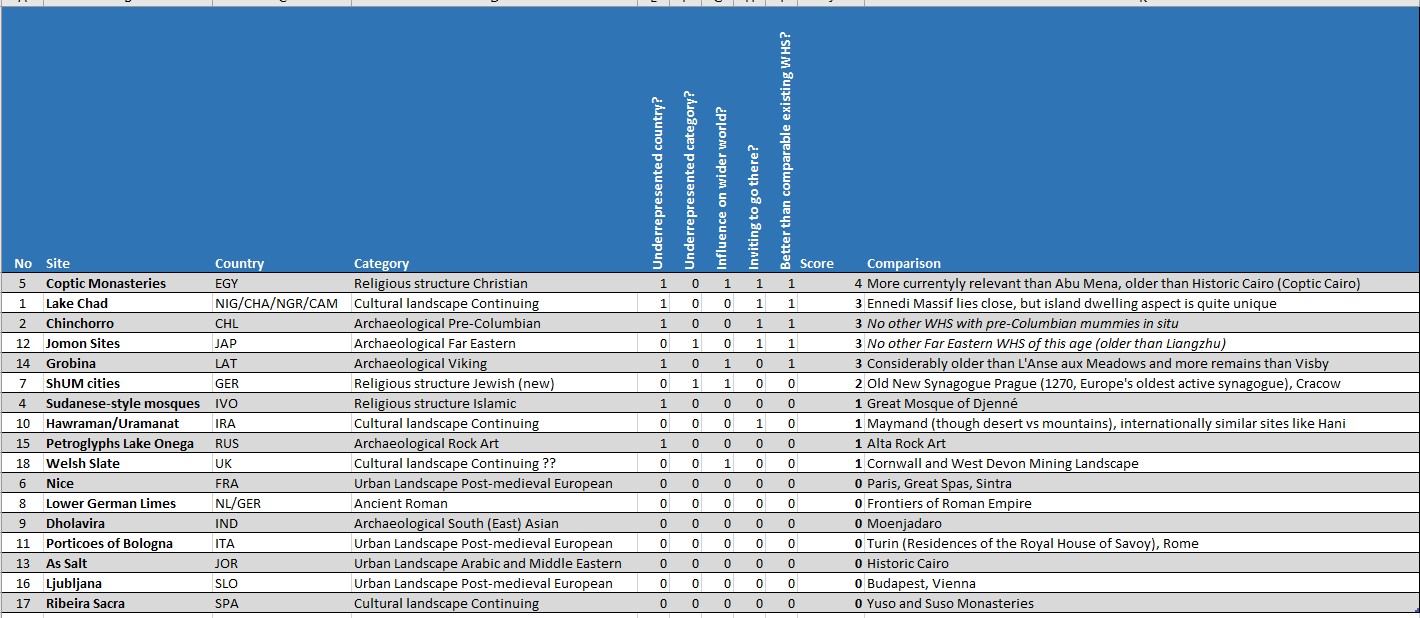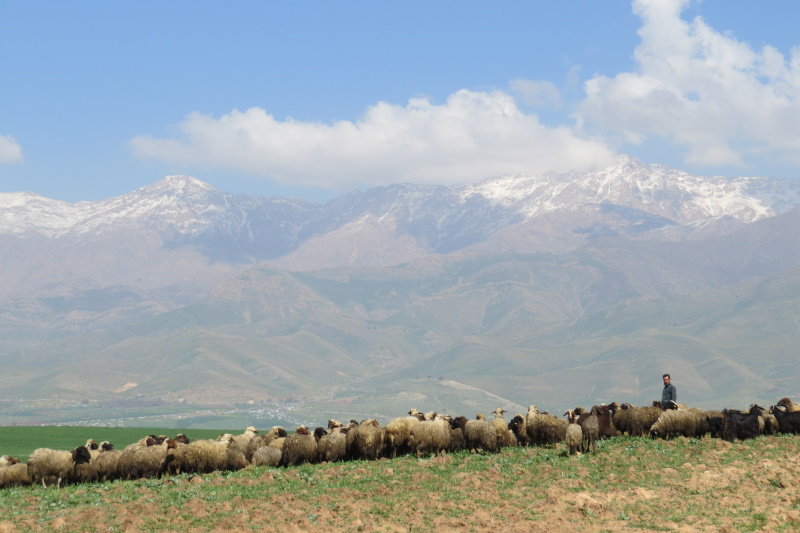Blog WHS website
Looking ahead to 2021
The WHC meeting of 2020 has not even been rescheduled yet, but signs are there that the preparations for 2021 have already started and the World Heritage nomination process will not skip a year. I encountered an official delegation during my visit to the Jewish cemetery in Worms on June 19 and the Executive Summaries of the 2021 cultural nominations have become available (were leaked?) via ICOMOS USA. They include 18 sites, of which 1 is a mixed site and 1 an extension.

I read through all these Executive Summaries to see whether they’d convince me – for an inscription or a visit that I’d look forward to. I even tried to weigh them by adding a few more objective criteria:
- Do they cover an underrepresented country or category?
- What impact have these sites had globally?
- Are they better than comparable sites on the List?
I put the answers all into a table for comparison, simply giving a 1 (Yes) or a 0 (No) (click here for a full size overview):

I am tempted to conclude that there is no great site among them, however a few do stand out:
- Coptic Monasteries of Wadi al-Natrun: framed as ‘the’ place that carries forward the Coptic traditions, including the Coptic language, and the birthplace of Christian monasticism. It indeed is probably a better site to show the historical continuity of Christianity in Egypt than the already inscribed Abu Mena and Coptic Cairo.
- Lake Chad: an exemplary African nomination, bringing together 4 countries in what seems to be a fairly recent effort. It’s a cultural landscape mainly for its inhabited islands, it will be nominated for a natural criterion as well.
- Chinchorro: a very old pre-Columbian site in the desert of northern Chile, noteworthy for its preservation of mummies in situ.
- Jomon Sites: the archaeological remains of a sedentary hunter-fisher-gatherer society, it would become the oldest Far Eastern cultural WHS. I am a bit biased about this one as I had such a pleasant visit in 2012.
- Grobina: an important stepping stone in the global impact of the Vikings, “where Scandinavian settlers acquired the first invaluable experience for further expansion overseas, which determined the later processes and developments in the Viking Age”.
7 sites did not manage to score even 1 point in my ranking. Jordan’s As-Salt is probably the worst of them all. Especially these they try to hide behind political correct ICOMOS/IUCN/WHC lingo and excessive use of superlatives. They use phrases leaning to the ridiculous, such as: “.. has surpassed its original religious symbolism to become a community of belonging, social and economic organisation” (Ribeira Sacra), “petroglyphs full of symbolism, metaphors and Prehistoric realism” (Lake Onega) and “support between Muslim and Christian communities in the City transcending religious and ethnicities and producing a sense of community and belonging to a shared space” (As-Salt).

From these 17 new ones I have visited 5 conciously before. While reading the summaries I noticed that I had been close to Iran’s Hawraman/Uramanat Cultural Landscape as well, even twice! The valleys are located in a mountainous region in the provinces of Kurdistan and Kermanshah in western Iran. I have been as close as Sanandaj, the Irani Kurdish capital 155km away, and Halabja (long story to tell about that one) 84km away across the border with Iraq and the equally intriguing Ahmed Awa even closer as the crow flies. At least I got photos of the iconic Zagora mountains from the other side!
What do you think of the batch of 2021 so far?
Els - 5 July 2020
Comments
messy 11 July 2020
they seem fine, but what about the Hagia Sophia? Do to be whitewashed and turned back into a mosque?
Nan 5 July 2020
The batch is not making me excited. It feels Unesco would be better served by cutting off new inscriptions by the regulars.
Zoë Sheng 5 July 2020
Nice overview. I only went to ~half of these...
I didn't enjoy Coptic Monasteries. The access was really restricted because the driver was Muslim and try finding a non-Muslim driver in Egypt! After all the police checks and military escorts one eventually gets to visit the monastery it's basically what many European monasteries look like. People inside were very welcoming to visitors. Being "earliest" might be a thing but it's not a good visit plus they are heavily restored to the brink of looking like new buildings.
